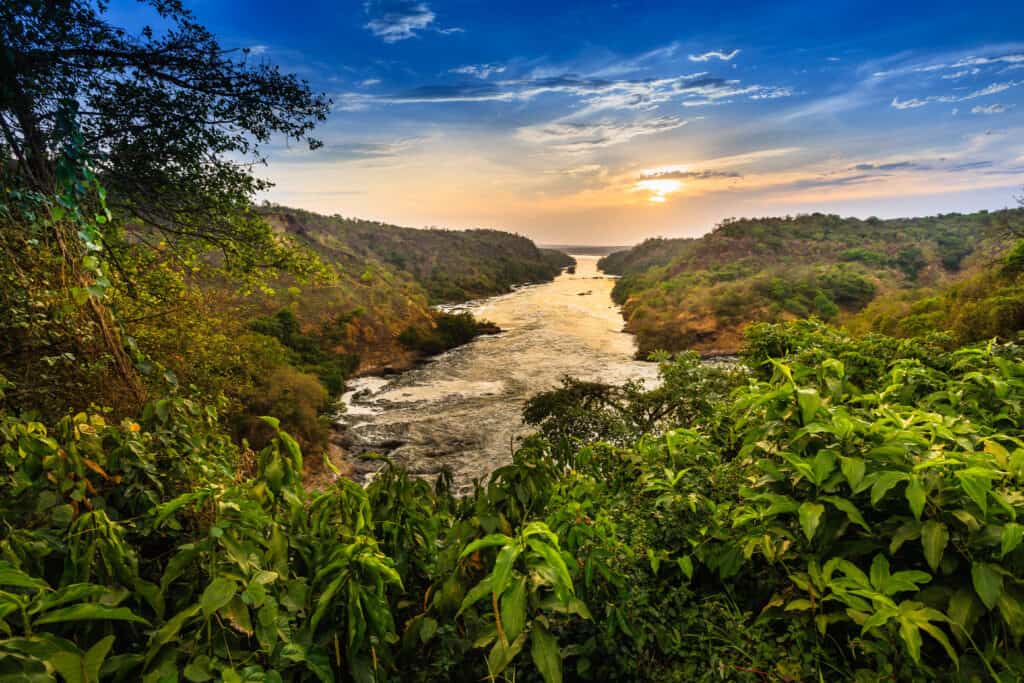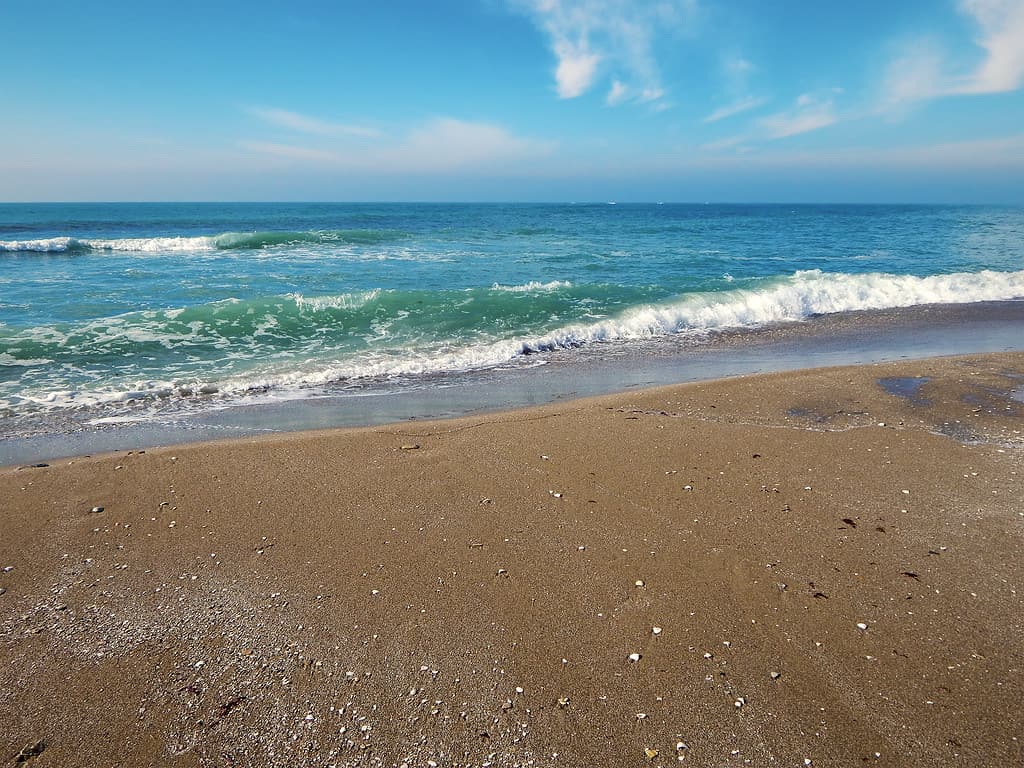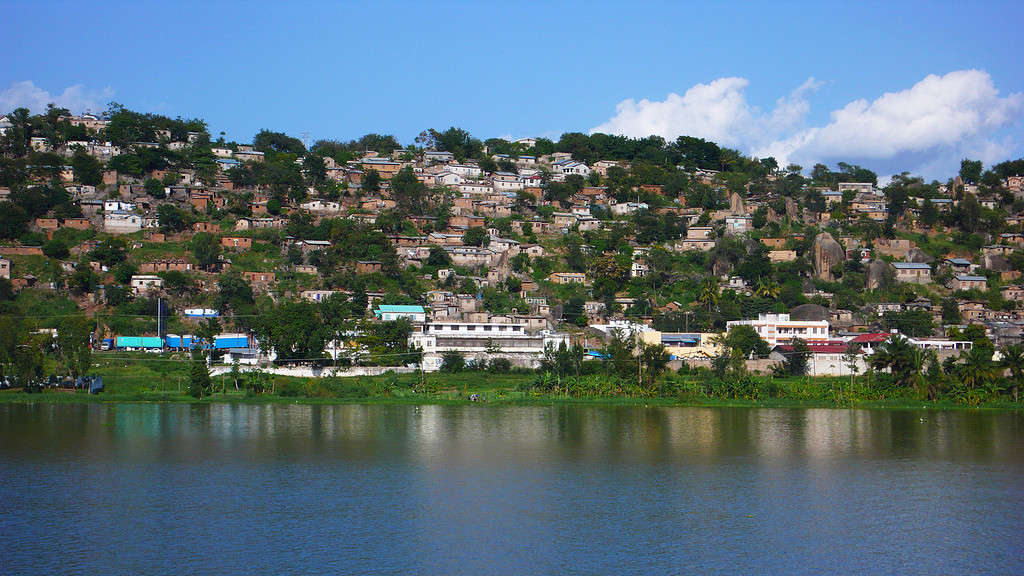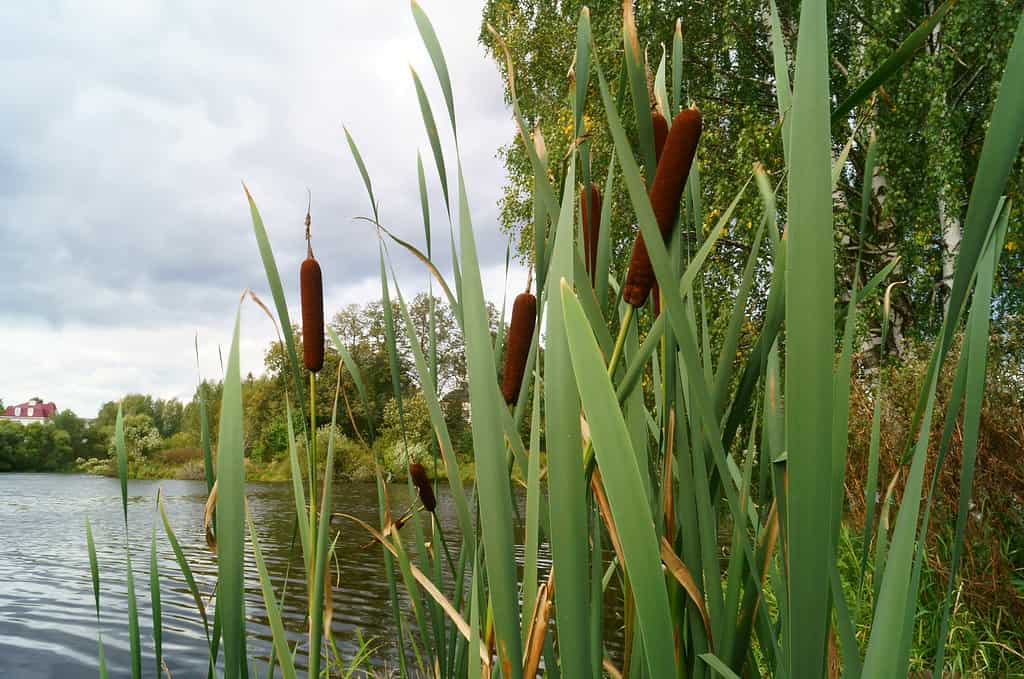Lake Victoria is the third-largest lake in the world, the second-largest freshwater lake in the world, and the largest lake in Africa! But how big is Africa’s Lake Victoria? Lake Victoria has a surface area of 23,146 square miles (59,947 km2) and at full pool, has a capacity of 582 cubic miles (2,424 km3). So, grab your SCUBA gear as we take a deep dive into Lake Victoria, comparing its size to the world’s biggest lakes!

ake Victoria has a surface area of 23,146 square miles (59,947 km
2).
©Travel Stock/Shutterstock.com
Africa’s Lake Victoria
Lake Victoria is the largest lake in Africa and the second-largest freshwater lake in the world by surface area. It is located in the Eastern part of Africa. It is bordered by three countries: Kenya, Tanzania, and Uganda. The lake is a crucial resource for numerous communities in the region, supplying drinking water, and irrigation for agriculture. The waters of Lake Victoria also support a thriving fishing industry that contributes significantly to the area. The Nile perch, the principal commercial catch, is an invasive species that was introduced into the lake in the mid-20th century. Lake Victoria has faced issues related to climate change and population growth. These include overfishing and algae blooms. Lake Victoria is considered the source of the Nile River.

The Nile River, pictured in Uganda, emerges from Lake Victoria.
©Radek Borovka/Shutterstock.com
Lake Victoria At a Glance
How does Lake Victoria stack up when compared to the biggest lakes in the world? The Caspian Sea dwarfs Lake Victoria, comprising six times the surface area. Lake Victoria is marginally smaller than the largest North American Great Lake, Lake Superior, and approximately the same size as Lakes Huron and Michigan. The world’s sixth-largest lake, Tanganyika, is almost 50% smaller. Smack-dab in the middle of the five largest lakes in the world, Lake Victoria holds her own.
| Lake/Location | Size (Surface Area) |
|---|---|
| Caspian Sea, Eastern Europe/Asia (saltwater) | 150,000 square miles (389,000 km2) |
| Lake Superior, North America (Largest freshwater) | 31,700 square miles (82,100 km2) |
| Lake Victoria, Africa | 23,140 square miles (59,940 km2) |
| Lake Huron, North America | 23,010 square miles (59,590 km2) |
| Lake Michigan, North America | 22,410 square miles (58,030 km2) |
| Lake Tanganyika, Africa | 12,700 square miles (32,900 km2) |
| Lake Baikal, Russia (world’s deepest lake) | 12,248 square miles (31,722 km2) |
| Great Bear Lake, North America (Canada) | 12,028 square miles (31,153 km2) |
| Lake Malawi, Africa | 11,400 square miles (29,600 km2) |
| Great Slave Lake, North America (Canada) | 10,500 square miles (27,200 km2) |
| Lake Erie, North America | 9,910 square miles (25,667 km2) |

The Caspian Sea, comprised of saltwater, has over six times the surface area of Lake Victoria.
©ekipaj/iStock via Getty Images
Major Ports
Lake Victoria has several ports that serve as important transportation hubs for the surrounding area. Ports facilitate the movement of goods and people across the countries that share the shores of Lake Victoria. Mwanza, Tanzania, located on the Southern shore of Lake Victoria, is one of the largest ports on the lake. It is a crucial economic center and a gateway for trade between Tanzania and other countries.

The port city of Mwanza, Tanzania is located on Lake Victoria.
©Danita Delimont/Shutterstock.com
Kisumu, Kenya is on the Northeastern shore of Lake Victoria. It is a major port that serves as a transportation hub, connecting the lake region with other parts of Kenya and neighboring countries. Entebbe, Uganda, on the North shore of Lake Victoria, has been the center of international news several times in recent history. As a major port city in the Middle East, Entebbe has been the site of intriguing military operations. There is even a film about events that unfolded there in the summer of 1976.
Wildlife
Lake Victoria supports a wide array of wildlife. The lake is home to a variety of fish species, including catfish, cichlids, Nile perch, and tilapia. The fish population in Lake Victoria supports a significant fishing industry. The lake and its shores provide habitats for a variety of different birds. Herons, egrets, cormorants, and kingfishers are a few of the avian species found around the lake. Hippos, crocodiles, and the African clawless otter inhabit the lake, particularly in shallow bays and river mouths. The lakeshore is home to mammals such as vervet monkeys, various antelope species, and the African clawless otter.

Lake Victoria is home to hippos and crocodiles.
©StuPorts/iStock / Getty Images Plus via Getty Images
Plant Life
Lake Victoria and its surrounding areas support a variety of plant life. Various aquatic plants thrive in the shallow and nearshore areas of Lake Victoria. These include water hyacinth, papyrus, and water lilies. These plants provide important habitats for fish and other aquatic species. The lake’s wetland areas and marshes support plants adapted to wet conditions, like Typha grass, sedges, and water hyacinth. In the broader area surrounding Lake Victoria, there are forests and woodlands that include trees such as mahogany, acacia, and eucalyptus.

Typha grass grows along the shores of Lake Victoria.
©Panchuali/Shutterstock.com
Five Fascinating Facts About Lake Victoria
- Locally the lake is called ‘Nnalubaale (Luganda), Nyanza (Kinyarwanda), Nam Lolwe (Dholuo), and Ukerewe (Swahili).
- Geographical studies suggest that Lake Victoria has dried up completely three times since its formation.
- The lake produces electricity via two dams in Uganda. The Nalubaale Hydroelectric Power Station and the relatively new Kiira Power Station.
- Rainfall accounts for 80% of Lake Victoria’s water.
- Boat service, in the form of ferries, has been available on Lake Victoria since the late 19th century.
The photo featured at the top of this post is © Travel Stock/Shutterstock.com
Thank you for reading! Have some feedback for us? Contact the AZ Animals editorial team.






